XanthesmaXanthesma (Xenohesma) perpulchra Xanthesma (Xenohesma) perpulchra and Xanthesma (Xanthesma) brachycera
Belonging to the superfamily Euryglossinae is the interesting group of bees in the genus Xanthesma. Like many euryglossines bees who have distinctive facial fovea (grooves on the inside of the inner eye margin). The genus Xanthesma — encompassing four subgenera Xanthesma (Argohesma), Xanthesma (Chaetohesma), Xanthesma (Xanthesma) and Xanthesma (Xenohesma), also have these facial grooves, in which the top of these facial grooves curves stongly in towards the ocelli.1
Another distinctive feature of this group of bees is that most species have distinctive predominance of yellow colour on their bodies, the colouring found in both the male and female of the species, although both sexes exhibit sexual dimorphism.
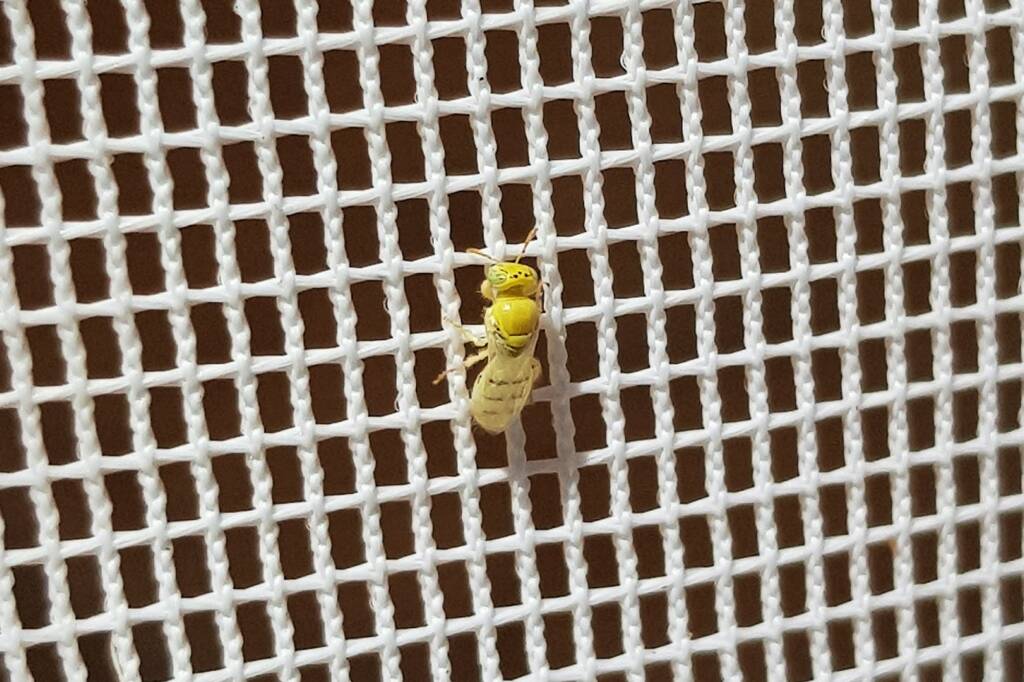
A new study by Curtin and Flinders Universities, found within the genus Xanthesma, what was once thought to be two different species within this group of native Australia bee, are actually the same species.
Lead researcher Dr. Kit Prendergast from the Curtin School of Molecular and Life Sciences said the study, based on native bee surveys at Perth locations of Wireless Hill, Shenton Park and Russo Reserve, fundamentally alters previous thinking.
Co-authored by Dr. James Dorey from Flinders University and published in the Australian Journal of Taxonomy, the research is titled “Xanthesma (Xenohesma) perpulchra and Xanthesma (Xanthesma) brachycera are conspecific based on DNA barcodes.“
Picture is the native bee genus Xanthesma, superfamily Euryglossinae in the Moore River National Park of Western Australia. It is thought to be Xanthesma (Xenohesma) perpulchra.2, 3, 4
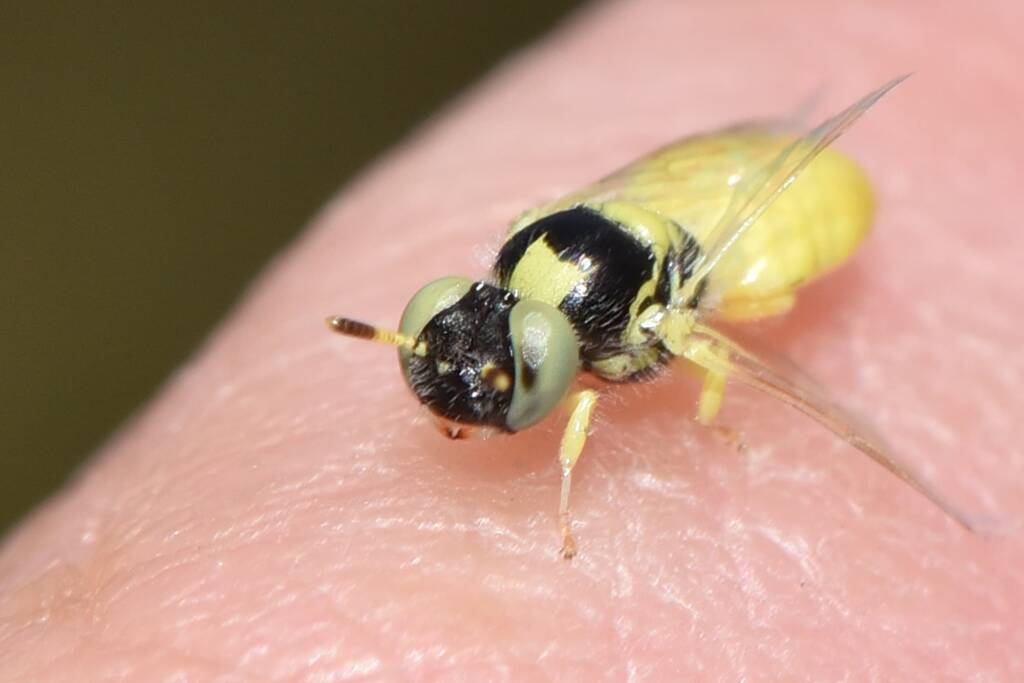
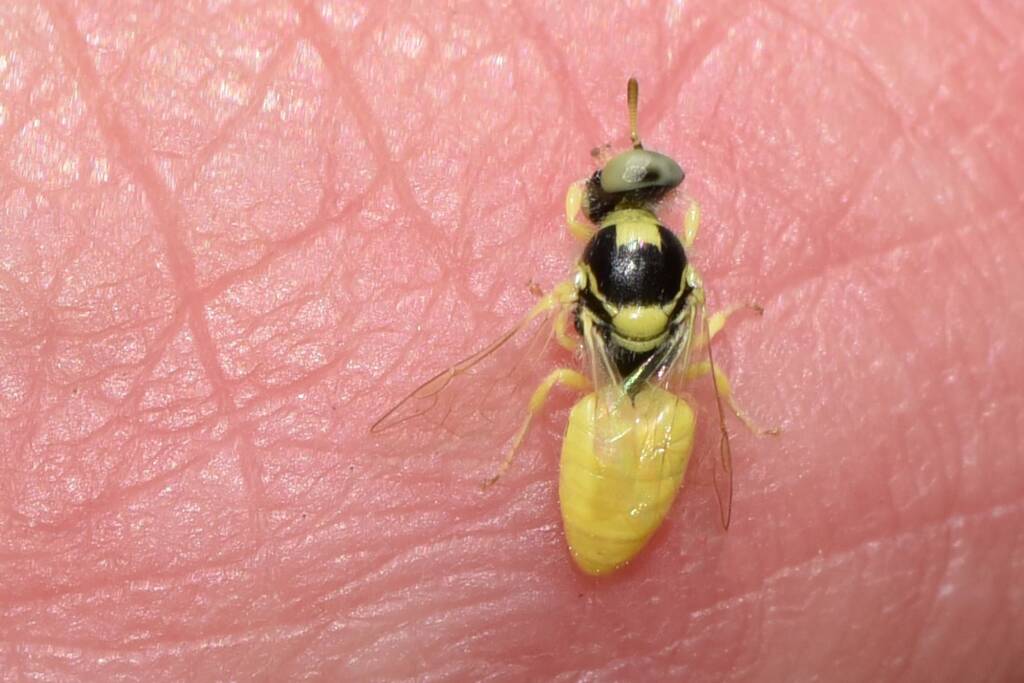
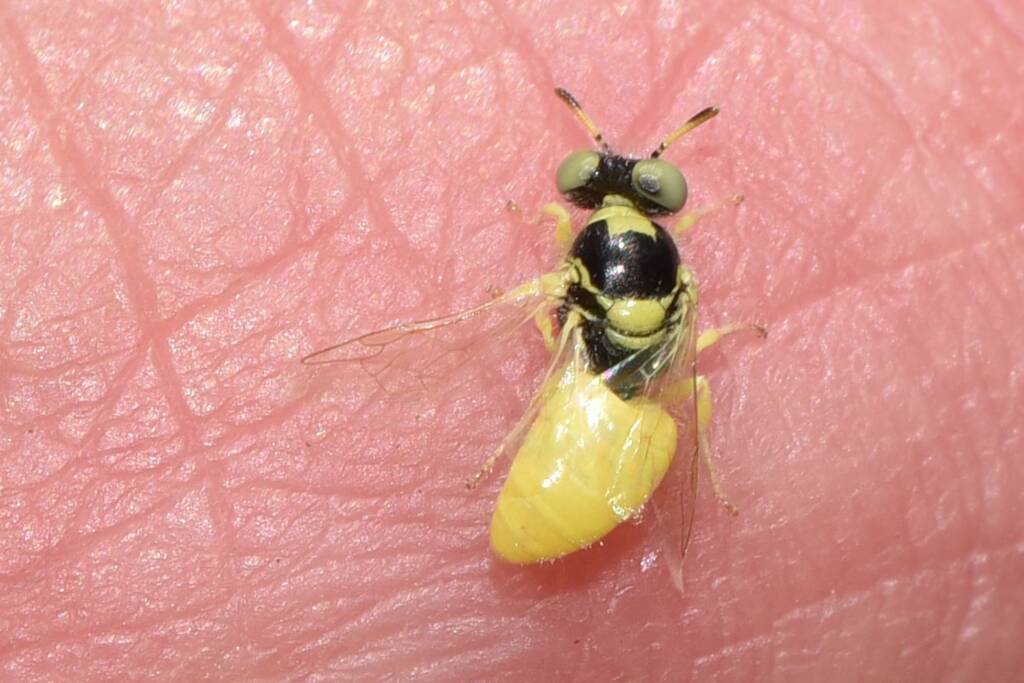
The following specimen of Xanthesma (pictured below), were rescued from a swimming pool in Alice Springs, Northern Territory.
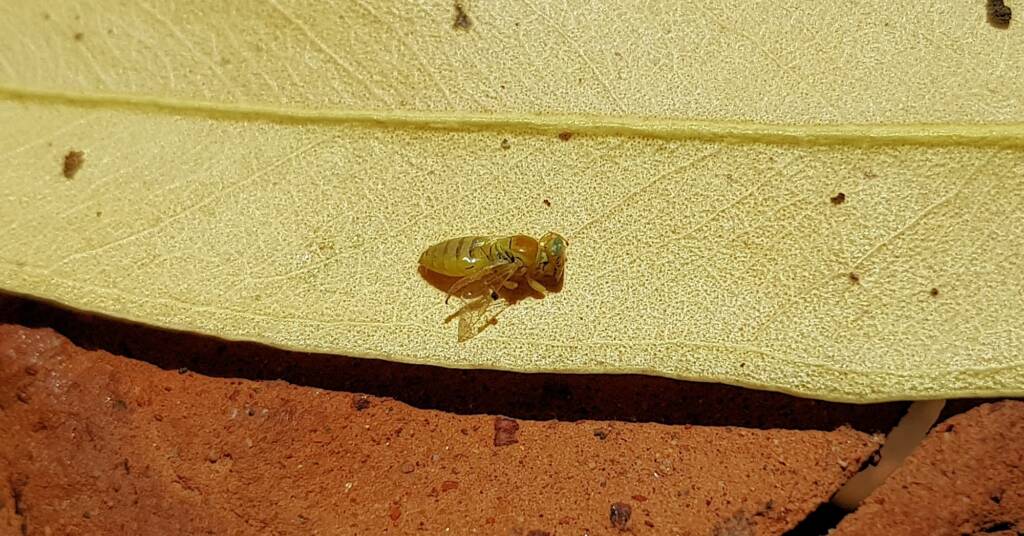
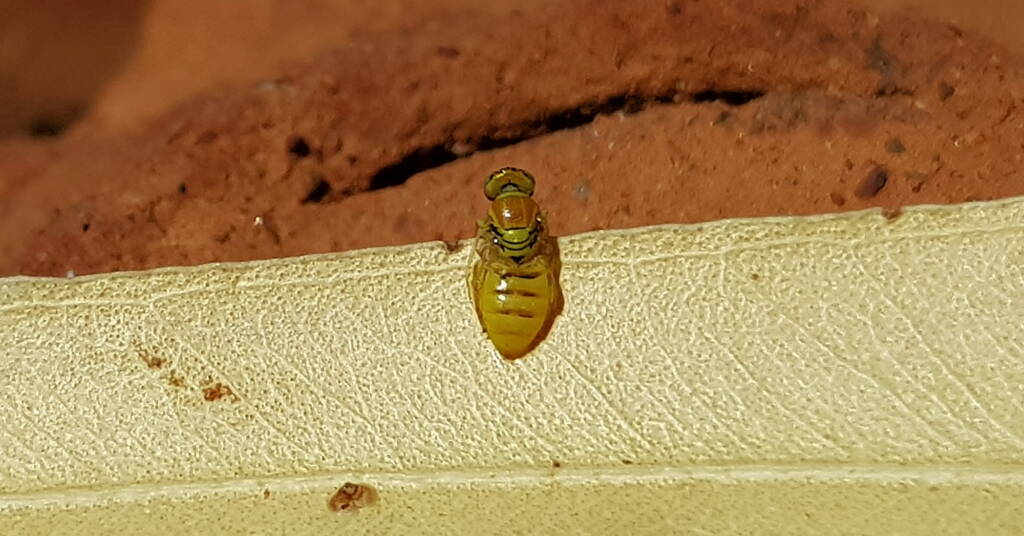
A new study by Curtin and Flinders Universities has found that what were thought to be two different species of native Australian bee are in fact one.
Lead researcher Dr Kit Prendergast from the Curtin School of Molecular and Life Sciences said the study, based on native bee surveys at Perth locations of Wireless Hill, Shenton Park and Russo Reserve, fundamentally alters previous thinking.
Source: Lucien Wilkinson, Curtin University3
Following is an individual caught from a swarm, possibly Xanthesma (Xanthesma) vittata.
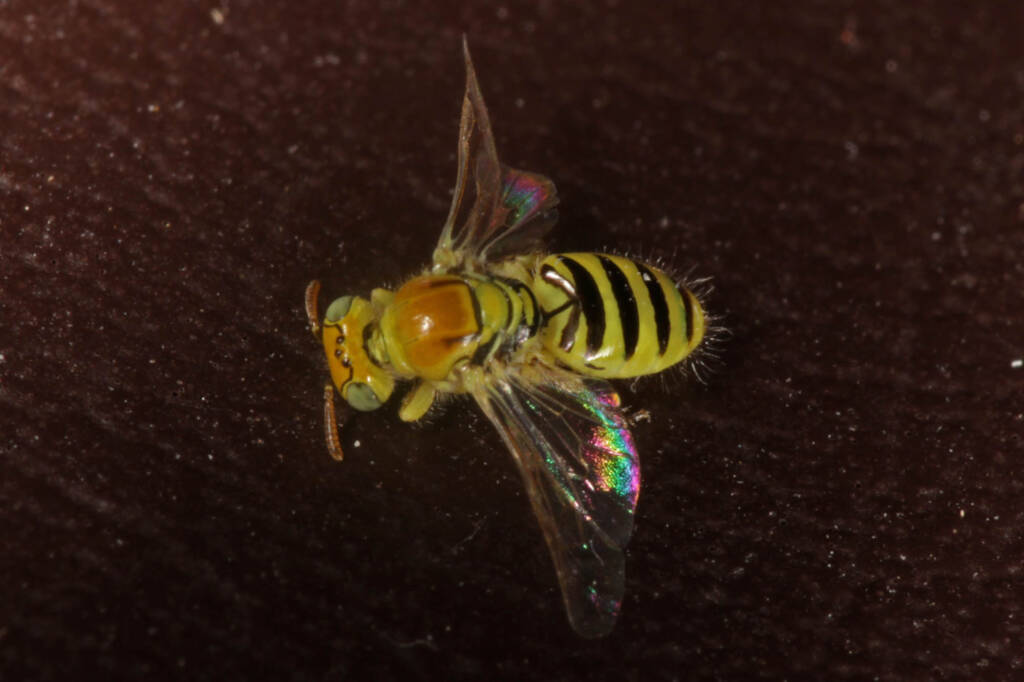
A tiny little bee species from Australia pinned with a tiny little pin called a minutum to a foam block…from the Packer Lab’s collection. Photography Information: Canon Mark II 5D, Zerene Stacker, Stackshot Sled, 65mm Canon MP-E 1-5X macro lens, Twin Macro Flash in Styrofoam Cooler, F5.0, ISO 100, Shutter Speed 200 USGSBIML Photoshopping Technique: Note that we now have added using the burn tool at 50% opacity set to shadows to clean up the halos that bleed into the black background from “hot” color sections of the picture.
Source: Eastern Ecological Science Center December 17, 20197
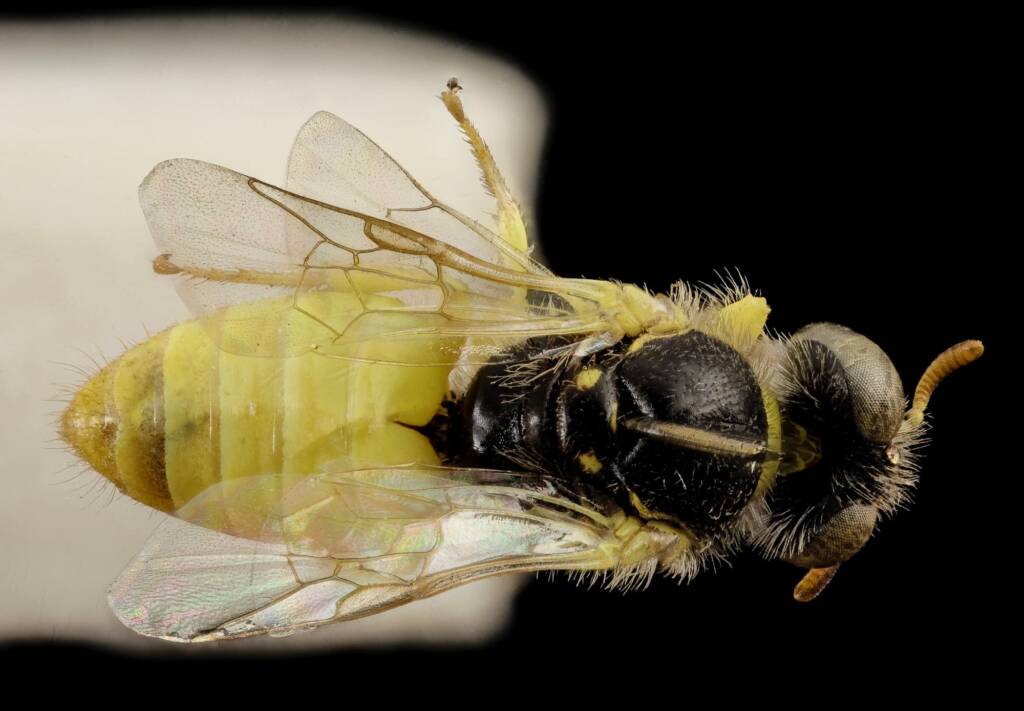
If there is any error or update required, please feel free to let us know.
Contact Us
- Scientific classification
- Kingdom: Animalia
- Phylum: Arthropoda
- Subphylum: Hexapoda
- Class: Insecta
- Informal: Pterygotes
- Order: Hymenoptera
- Superfamily: Apoidea
- Informal: Apiformes
- Family: Colletidae
- Subfamily: Euryglossinae
- Genus: Xanthesma
- Subgenus: infrageneric Xanthesma
- Species:
- Xanthesma (Xanthesma) argosomata Exley, 1969
- Xanthesma (Xanthesma) brachycera (Cockerell, 1914)
- Xanthesma (Xanthesma) dasycephala Exley, 1969
- Xanthesma (Xanthesma) flava Michener, 1965
- Xanthesma (Xanthesma) furcifera (Cockerell, 1913)
- Xanthesma (Xanthesma) lasiosomata Exley, 1969
- Xanthesma (Xanthesma) lutea Exley, 1969
- Xanthesma (Xanthesma) merredensis Exley, 1974
- Xanthesma (Xanthesma) micheneri Exley, 1978
- Xanthesma (Xanthesma) nigrior Michener, 1965
- Xanthesma (Xanthesma) parva Exley, 1969
- Xanthesma (Xanthesma) trisulca Exley, 1969
- Xanthesma (Xanthesma) vittata Exley, 1969
- Scientific classification
- Kingdom: Animalia
- Phylum: Arthropoda
- Subphylum: Hexapoda
- Class: Insecta
- Informal: Pterygotes
- Order: Hymenoptera
- Superfamily: Apoidea
- Informal: Apiformes
- Family: Colletidae
- Superfamily: Euryglossinae
- Genus: Xanthesma
- Subgenus: Xanthesma (Xenohesma) Michener, 1965
- Species:
- Xanthesma (Xenohesma) blanda (Smith, 1879)
- Xanthesma (Xenohesma) chrysea (Exley, 1969)
- Xanthesma (Xenohesma) clethrosema (Exley, 1969)
- Xanthesma (Xenohesma) clypearis (Michener, 1965)
- Xanthesma (Xenohesma) evansi (Michener, 1965)
- Xanthesma (Xenohesma) fasciata (Exley, 1969)
- Xanthesma (Xenohesma) federalis (Michener, 1965)
- Xanthesma (Xenohesma) flavicauda (Michener, 1965)
- Xanthesma (Xenohesma) hirsutoscapa (Exley, 1969)
- Xanthesma (Xenohesma) maculata (Smith, 1879)
- Xanthesma (Xenohesma) melanoclypearis (Exley, 1969)
- Xanthesma (Xenohesma) perpulchra (Cockerell, 1916)
- Xanthesma (Xenohesma) primaria (Michener, 1965)
- Xanthesma (Xenohesma) scutellaris (Michener, 1965)
- Xanthesma (Xenohesma) sigaloessa (Exley, 1969)
- Xanthesma (Xenohesma) stagei (Exley, 1969)
- Xanthesma (Xenohesma) villosula (Smith, 1879)
Footnote & References
- The BowerBird Bugle, 17 June 2016 by Ken Walker, Museum Victoria, Edition 43, p19, https://researchdata.museum.vic.gov.au/BowerBird_Bugle/Edition_43.pdf
- Prendergast KS & Dorey JB (2023). Xanthesma (Xenohesma) perpulchra and Xanthesma (Xanthesma) brachycera are conspecific based on DNA barcodes. Australian Journal of Taxonomy 39: 1–10. doi: https://doi.org/10.54102/ajt.df83w
- Two bee species become one as researchers solve identity puzzle, 30 OCT 2023, Lucien Wilkinson, Curtin University, https://www.curtin.edu.au/news/media-release/two-bee-species-become-one-as-researchers-solve-identity-puzzle/
- Two bee species become one as researchers solve identity puzzle, 30 October 2023, by Curtin University, Phys.org, Science X Network, https://phys.org/news/2023-10-bee-species-identity-puzzle.html
- Genus Xanthesma, Moore River National Park WA © Jean and Fred Hort
- Xanthesma (Xanthesma) vittata, Muchea WA © Marc Newman
- Xanthesma flavicauda, m,Australia, back, Eastern Ecological Science Center December 17, 2019, https://www.usgs.gov/media/images/xanthesma-flavicauda-maustralia-back
- Xanthesma (Xenohesma) Michener, 1965, Atlas of Living Australia, https://bie.ala.org.au/species/https://biodiversity.org.au/afd/taxa/d9ecf5bf-4a88-4b9b-bcc1-61bad7528158
XanthesmaXanthesma (Xenohesma) perpulchra Xanthesma (Xenohesma) perpulchra and Xanthesma (Xanthesma) brachycera
EuryglossinaeEuryglossinae Index Callohesma Dasyhesma Euhesma Eurglossa adelaidae Euryglossa calaina Euryglossa calaina female Euryglossa ephippiata Euryglossina fuscescens Xanthesma Xanthesma (Xenohesma) perpulchra Xanthesma (Xenohesma) perpulchra and Xanthesma (Xanthesma) brachycera
BeesBees Anatomy Bee Behaviour Blogging Bees… Bees – image index Amegilla Bee Apis mellifera Austroplebeia australis Austrothurgus Braunsapis sp Ceylalictus perditellus Colletidae Euryglossinae Exoneura Homalictus Hyleoides bivulnerata Lasioglossum Lasioglossum (Chilalictus) Lipotriches Megachile Meroglossa Stenotritidae Tetragonula Thyreus Xylocopa
